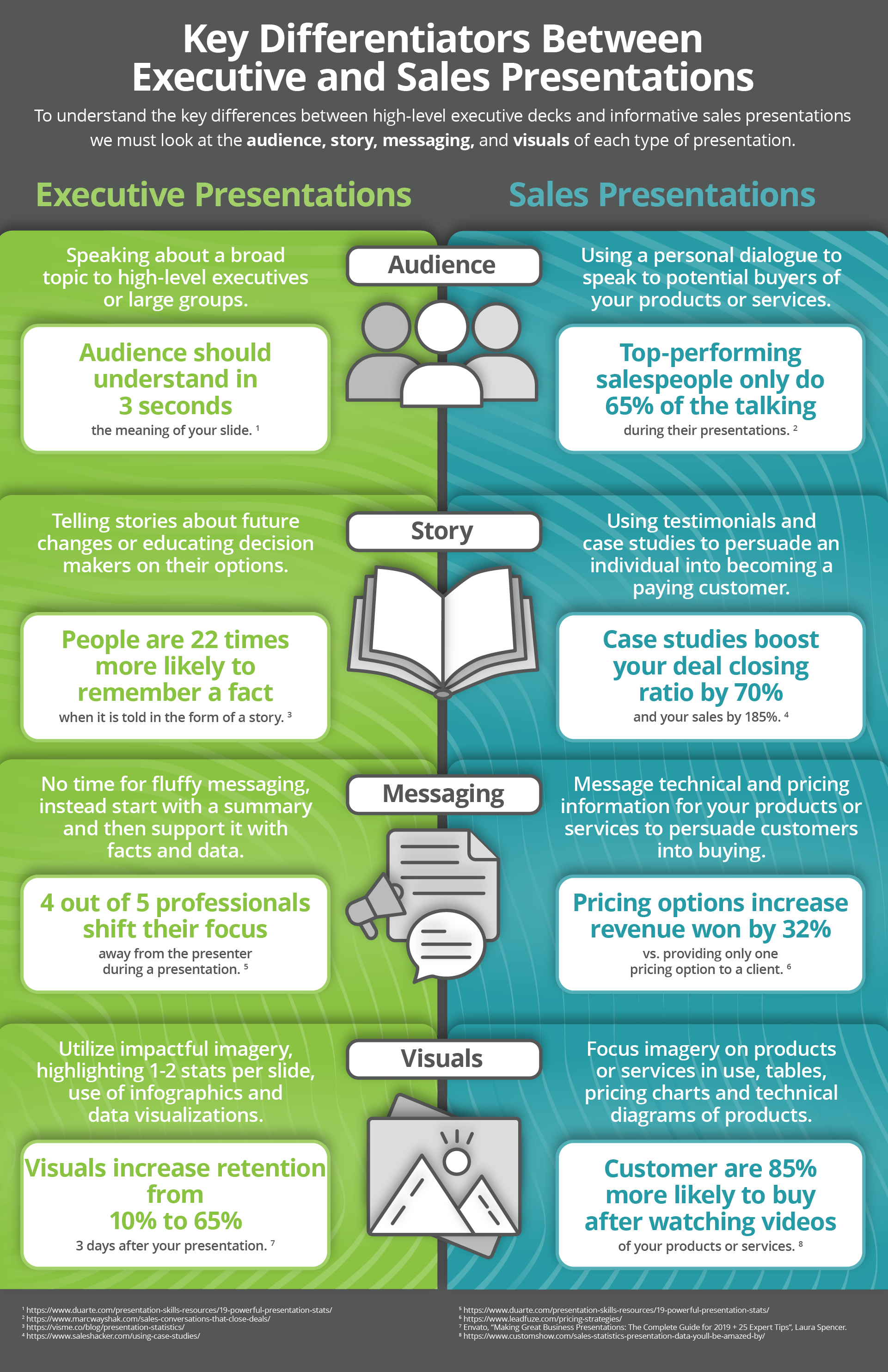At Weber Associates, we work with our clients to develop a variety of presentations to fit their needs. Two of the most common types of presentations we create are high-level executive decks, and informative sales presentations. To understand the key differences between these two presentation formats we must look at the audience, story, messaging, and visuals of each type of presentation.
Audience
The most fundamental step in determining the type of presentation that will work best for you is to know your audience. The audience you are presenting to will determine the story you are trying to tell as well as how technical and specific your presentation will become. Executive presentations tend to be created to inform high-level executives about a broad topic. Executive presentations can also be presented to large audiences or entire organizations to establish a clear vision for the future.
Sales presentations, on the other hand, are used by your employees to inform potential buyers of your products or services. Often times sales presentations are presented one-on-one or to small groups, which allows for a more personal dialogue.
Story
Every good presentation has a story that it is trying to tell. The purpose of executive presentations is to look towards future changes and educate decision makers the options they have available. The story that executive presentations tell sets the tone for how optimistic or pessimistic the vision for the future is.
In the case of sales presentations, the goal is to persuade an individual into becoming a customer. The overarching story is about immediate benefit potential buyers will have by choosing your product or service. The stories that sales presentations tell are often emphasized by using existing customer testimonials and case studies pointing to the benefits of your products or services.
Messaging
The executives you are presenting to don’t have the time or patience for fluffy messaging. Executive presentations tend to have a summary slide first because executives want to know the entirety of what you are going to tell them up front. After expectations are set, the remainder of the presentation focuses on facts and data to support the insights in the summary.
The messaging for your sales presentation has the opportunity to be a little bit more flexible. You are using your words to persuade individuals into becoming paying customers. One important aspect of sales presentation messaging is explaining the technical specifications and benefits of your product or service over other products and services. Sales presentations typically also include pricing information and available upgrades.
Visuals
A rule of thumb for all visuals in presentations is that visuals should illuminate, not obscure information. Often times, executive presentations utilize impactful and dominant imagery to hit their points home. When highlighting key statistics in an executive presentation, there are usually only one or two statistics per slide. Other things like infographics and polished data visualizations can be used to show hierarchies or processes within the information.
The visuals for sales presentations are much more pragmatic. Imagery is often focused on the product or service in use. Tables of key features and pricing charts are common because they can show a large amount of information in a small space. For sales presentations focused on physical products, customers will want to see technical diagrams that highlight each feature.
Presentations are an opportunity for individuals and executives to get a glimpse at your business. By understanding the key differences between executive presentations and sales presentations, your business can use best practices to give the most impactful presentation to your audience.

About Weber Associates
Weber Associates is a Columbus, OH-based consulting firm. Since 1985, we have blended the creativity of a marketing agency with the analytical rigor of a consultancy to help our clients solve real sales and marketing challenges so they can significantly grow revenues and customer loyalty.


